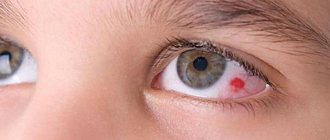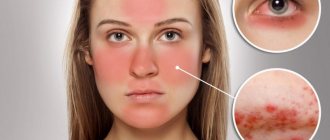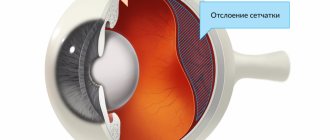The eyes are not only the mirror of the soul, but also a delicate human organ that reacts sharply to everything. Because of this, we immediately feel the sensation of a foreign body in the eye, and it haunts us until all measures are taken to remove it.
Ignoring the problem can lead to constant discomfort and complete loss of vision. What measures need to be taken to prevent this from happening? However, symptoms are not always related to something getting into the eye. What to do in this case and how to determine the true cause?
Symptoms of unpleasant sensations: why they are dangerous
The eyeball consists of the outer, choroid and retina. The cornea contains many supersensitive nerve endings, which is why we feel pain when something foreign gets into the eye. Protective reflexes are activated: blinking or increased production of tears.
In addition, a number of characteristic symptoms are observed, namely:
- redness;
- pain and burning of varying degrees;
- sensitivity to bright light;
- partial decrease in visual acuity;
- bleeding of superficial ocular vessels;
- difficulty opening the injured eye;
- swelling of the periocular tissues.
Which of the listed signs is present and to what extent depends on the type of foreign body and its location. Even after removal, symptoms persist until the damaged tissue heals.
Our eye is designed in such a way that it is possible to naturally remove small unnecessary particles. In some cases this happens. If the foreign body penetrates too deeply, it is no longer possible to remove it without medical assistance.
| Delay is dangerous due to infection, further tissue destruction and even loss of visual function. If you are sure that a foreign object is not the cause of pain, you should consult an ophthalmologist. |
What does the doctor do?
If you visit the ophthalmologist with a foreign body sensation in the eye, he or she will first use a light source, a magnifying glass, and a slit-lamp microscope to examine the cornea, conjunctiva, eyelids, and tear ducts. If foreign body penetration is suspected, the doctor may have to retract the eyelid. Fluorescein drops can stain foreign bodies or small corneal lesions and make them easier to recognize. After rinsing the eye, the doctor can usually remove the foreign body. In this case, he can first numb the eye with a few drops of local anesthetic.
Active ingredients can also be administered in the form of ointments and drops to heal wounds, relieve pain or relax the eye muscles. If there is inflammation, antibiotics often help.
If any object is in the eyeball, it may need to be removed surgically, then hospitalization at the eye clinic is necessary.
Possible causes of pain and discomfort
Among the calls to the ophthalmologist, the leading ones are particles of wood and metal. Most often this happens when no protective equipment was used during work. But pain is not always associated with this, because symptoms of a foreign body can be observed in some eye diseases.
What are the real reasons? This can only be found out in a medical institution. Remember this and do not self-medicate! Here is a list of possible reasons.
Presence of a foreign body
A foreign object can cause structural and toxic damage to the eye. The first refers to those that were received during an injury. The degree of harm depends on the shape, size and speed of the foreign body. Toxic damage is caused by prolonged presence and depends on the chemical composition and duration of that body.
For example, glass and plastic can remain in the eye for a long time without causing toxic damage, while iron or copper is fraught with complications in the form of siderosis or chalcosis.
| Depending on how deep the penetration is, removal is carried out on an outpatient or inpatient basis. In any case, you should immediately contact an ophthalmologist for assistance. After the object is removed, restorative therapy is prescribed. |
Ingrown eyelash
The medical term is trichiasis. The problem may be acquired due to previous infections (herpes, blepharitis, trachoma, conjunctivitis). Sometimes ingrown eyelashes appear from birth or after injury to the eyelids. With trichiasis, the hair follicles occupy an incorrect position on the surface of the skin of the lower or upper eyelid.
Why is trichiasis dangerous? This is not just a cosmetic problem, especially if ingrown eyelashes are constantly rubbing against the surface of the eye. In this case, constant microtraumas are caused to the outer shell, and this is fraught with erosions and inflammation of the cornea. The final outcome is blurred vision or complete blindness.
| Simply removing such an eyelash is not enough, because the hair follicle remains. Laser therapy gives good results, after which she dies. However, before this, you need to find out the true cause of the ingrown eyelash and undergo treatment to prevent relapses. |
Return to contents
Damage to the cornea from contact lenses
The next reason why painful symptoms may occur is contact lenses. Occurs due to:
- violations of operating rules;
- incorrectly selected lenses;
- mechanical damage;
- inaccuracy when putting on/taking off;
- getting something under it;
- previously unidentified contraindications;
- protein, mineral deposits on the surface of the lens.
If you experience discomfort, you should immediately remove the lenses, rinse your eyes and consult an ophthalmologist. Under no circumstances should you re-wear them until the cause has been identified. For the period of treatment, stop wearing them, and then replace them with new ones.
Dry eye syndrome
The outer surface of the eye is covered with a thin film that protects and provides oxygen. It consists of three layers: the very first fatty layer, then the water layer and the last peripheral layer. If the first one is damaged or there is a lack of moisture in the second one, we feel a burning sensation and discomfort when blinking.
| This is dry eye syndrome, an occupational disease of programmers. Develops with long work at the computer, vitamin deficiency. Elderly people are also at risk. |
You can cope with the problem by artificially moisturizing the eyeball. More radical methods involve implanting a container with a liquid under the eyelid that wets the surface of the eye, or occluding the tear ducts (removing plugs).
Glaucoma
It is characterized by increased intraocular pressure and as a result the optic nerve dies. This disease is insidious in that at first it is asymptomatic, i.e. no increase in pressure is felt. For this reason, they turn to doctors in the later stages, when too much time has been lost.
When diagnosed with glaucoma, it is important to follow your doctor’s recommendations, namely take medications and check intraocular pressure every three months. Treatment consists of lowering blood pressure; in advanced cases, surgery is performed.
Inflammatory processes in the eye
In this case, redness of the eyes and swelling of the soft tissues around the eyes are observed. Most often this is of an infectious nature, but can also be the result of other ophthalmological diseases.
| You cannot ignore the problem, as this is fraught with consequences. |
Hyperthyroidism
The disease is associated with increased production of thyroid hormones by the thyroid gland. It develops against the background of other diseases of the endocrine system. People who have undergone thyroid hormone therapy are at risk. It cannot be cured, so it is necessary to regulate hormone levels with medication throughout life.
With hyperthyroidism, the eyes appear bulging due to an increase in the palpebral fissure and protrusion of the eyeball. Other symptoms are swelling, hyperpigmentation of the eyelids.
Return to contents
Purulent formations
In order to neutralize purulent discharge, you need to find the cause. Among the most common are the following:
- inflammation of the cornea;
- allergic conjunctivitis;
- barley;
- demodicosis;
- trachoma;
- blepharitis.
If you find pus in yourself, you should first rinse your eyes with water at room temperature or strong black tea, and then consult a doctor. Treatment consists of antibiotic therapy, eye washes and corticosteroid medications.
Why does my eye hurt, as if there was a speck there?
List of reasons:
- Barley. An inflammatory process occurs in the meibomian gland. The causative agent is Staphylococcus aureus. The first sensation when you get sick is a speck in your eye. The next stage is itching. Then the temperature rises and a severe headache appears.
- Conjunctivitis. It has different types of pathogens (fungal, viral). There is redness, then pain, blinking cannot be done without lacrimation. This is a contagious disease.
- Blepharitis. Expressed as inflammation of the edge of the eyelid. In addition, a person feels a foreign body under the eyelid. Peeling of the skin often occurs.
- Astigmatism. The disease affects the internal ocular system, changing the shape of the cornea. Sometimes there is a feeling of an extra object on the conjunctiva.
- Cataract. Pathology changes the transparency of the lens. There is usually no pain, but there may be a feeling of a speck under the eyelid. Only a doctor prescribes treatment after examination.
- Glaucoma. There is a change in pressure inside the eye, so a foreign object is felt. Lack of treatment is a direct path to blindness.
- Dry eye syndrome. An unpleasant symptom occurs after spending a long time in front of a computer monitor. The cause is disturbances in the functioning of the sebaceous glands.
- Eyelash. It can get under the eyelid, resulting in discomfort.
- Trauma and the entry of various debris into the eye tissue. Damage often leads to disruption of the visual apparatus.
- Minor damage to the cornea (due to improper installation of contact lenses).
Unpleasant sensations and discomfort are a signal that it is time to visit a doctor. Complications are serious, and the likelihood of blindness is high.
Treatment of foreign body sensation in the eye
If you are haunted by the feeling of a speck and rinsing does not bring relief, you need to rub your eye as little as possible with your hand and try to keep it closed. To find out the cause, consult a doctor. At the initial consultation, tell the ophthalmologist how long ago and how it started.
Traditional treatment
For superficial lesions, removal is performed on an outpatient basis. To prevent the patient from feeling pain, local anesthesia is used.
Restorative therapy consists of antibacterial and anti-inflammatory drugs and is carried out until the eye is completely restored. With deeper penetrations, removal of the foreign body is possible only in a hospital, as complex surgical instruments are used.
Folk remedies
Their use is permitted only in combination with drug treatment in order to enhance its effectiveness. Particularly effective for barley, blepharitis, conjunctivitis. What could it be? Baths, compresses and rinses, for which decoctions of linden, yarrow, and chamomile are used. These medicinal herbs are very good natural antiseptics. And to reduce intraocular pressure, drops of diluted honey and aloe juice are used.
| Drinking blueberry leaf tea is also beneficial. |
Causes and possible diseases
The sensation of a foreign body in the eye is caused either by external irritants or by an eye disease.
External incentives
External irritants that can cause a foreign body sensation in the eye:
- Foreign substances: insect, grain of sand, dust, eyelashes, wood, glass, metal fragments,
- Computer work,
- Bad light,
- Bright sunlight.
Eye diseases
Sometimes the sensation of a foreign body in the eye is associated with an eye disease:
- Conjunctivitis,
- Blepharitis,
- Inflammation of the cornea (keratitis),
- Vascular inflammation (uveitis),
- Inflammation of the dermis (scleritis),
- Barley (Chalazion),
- Dry eyes/impaired hydration (too few tears).
Prevention measures
Any problem can be avoided when you take prevention seriously. Moreover, doing this is much easier than wasting your time and money on treatment. Visit your eye doctor at least once a year, especially if you wear contact lenses or have a family history of glaucoma.
If you use lenses, follow the proper insertion/removal technique, wash them well and store them properly. Change lenses promptly and do not wear lenses longer than recommended.
| Watch how much time you spend in front of the monitor, take breaks if necessary. |
When working with a grinder, hammer drill, or welding, be sure to wear safety glasses. For rooms with dry air, where air conditioning is often used, purchase a humidifier. It is natural to see the world around us, and only when we lose our vision can we understand what we are missing. Don’t let this happen, treat your vision as a priceless gift and take care of it!
Prevention helps!
Protect your eyes! Some causes of foreign body sensation in the eye can be avoided in advance. Especially from external irritants, you can protect your eyes: with sunglasses from ultraviolet rays, appropriate safety glasses when working in the garden or from chemicals. To maintain eye health, your work area should be well lit and ventilated. In addition, irritation and excessive stress also often lead to the sensation of a foreign body in the eye.
.
You may also be interested in
If your eye hurts, as if something is in your eye, but there is nothing there, you need to undergo a timely examination. Otherwise, the disorder may affect visual acuity. The condition is usually associated with damage to the mucous membrane - the conjunctiva.
Rules for working with a monitor, smartphone, tablet
It is impossible to completely do without electronic gadgets.
Therefore, people must learn to handle them correctly, observing the following rules:
- use the gadget no more than 2 hours a day if possible;
- if the device is used all day, take a break every 1-2 hours;
- apply gymnastics for the eyes;
- maintain a distance from the monitor, depending on the size of the device;
- often walk in the fresh air, where the gaze concentrates on distant objects, so a spasm of accommodation does not form.
Eye gymnastics is effective for ophthalmological diseases.
You can use a set of simple exercises that will take no more than 5 minutes:
- turning the eyes clockwise and in the opposite direction;
- rapid blinking for 15 seconds;
- strong compression of the eyelids, then relaxation;
- drawing the infinity sign and numbers from 0 to 9 with the eyeballs;
- moving the gaze from the upper right corner to the lower left, then from the upper left to the lower right;
- moving the gaze from the closest object to the horizon line outside the window.
Why does the sensation of a foreign body occur in the eye? The cornea of the eye, the upper protective layer of the eyeball, contains a huge number of nerve fibers. When a foreign body enters the eye, these nerve endings signal what has happened to prevent subsequent damage. The reasons for the unpleasant sensation of something foreign in the eye can be different:
- contact of a foreign object with the cornea of the eye. In everyday life we often encounter this problem. Just walking down the street can easily damage your eyeball. For example, a strong gust of wind can raise a column of dust into the air, and grains of sand can easily get into the eye. Or a branch that inappropriately stretched over the sidewalk, or just an unsuccessfully thrown thing. In addition, there is a separate class of professions whose representatives are at risk of receiving this type of injury. For example, welders, lumberjacks, carpenters, stonemasons. They are often haunted by the sensation of a foreign body in the eye.
- Chemical injury to the cornea. An uncomfortable feeling that something is in the eye can occur as a result of eye contact with a chemical or its fumes. However, this sensation may be accompanied by a chemical burn. It’s not for nothing that chemists’ workwear includes such a detail as safety glasses.
- Weather. Strong winds can weather the cornea of the eye or dry it out. In this case, minor damage to the eye is not uncommon, which can lead to the feeling of something extra in the eye. Snow caught in the eye or sunburn of the mucous membrane also causes a similar effect.
- Contact lenses. In the modern world, people with low vision often resort to wearing contact lenses. These “helpers” often cause discomfort in the eyes if used, stored or disinfected incorrectly.
- Ophthalmological diseases. The reasons why the presence of a foreign body (mote) is felt in the eye may be pathologies of this organ.
First aid if something gets in your eyes
If a foreign object gets into the eye, provide first aid. If there is minor damage, this can be done at home. But if blepharospasm or extensive damage occurs, contact an ophthalmologist or traumatologist.
First aid is carried out in several stages:
- Anesthesia. It is used if the patient is unable to open his eyes. Use solutions of lidocaine and novocaine. They are dripped in limited quantities, as they cause side effects with prolonged action.
- The person is placed in a dark room to reduce the strain on the visual organs. This eliminates photophobia and the patient can open the eyelids.
- Washing. It is better to use an antiseptic solution. Furacilin is suitable for this. Dissolve 1 tablet in a glass of water. Pharmacies sell ready-made solutions. The drug is instilled directly into the eyes. If this does not help, liquid is poured into the cup, and the victim lowers his open eyes into it. The fluid inside is blinked to remove the foreign body from the mucous membrane.
- If a foreign body causes a burn, you cannot do without the help of a doctor. He will remove the foreign object using ophthalmic instruments.
- Antibiotic instillation. This step is required to exclude a bacterial infection. The medicine is used for up to 7 days. They use Vigamox, Tobrex.
After completing first aid, the person is discharged home. There he must continue therapy. Ointments are used that improve the regeneration of damaged tissue, for example, Solcoseryl or Korneregel.
Anti-inflammatory drugs are used to relieve redness and swelling. For example, Visin. You can use it for no more than 4 days, after which it becomes addictive.
1 week after completing home treatment, return to see an ophthalmologist. He checks the functional condition of the eyes and assesses the degree of wound healing. If complications arise, he adjusts treatment methods.
When providing first aid, it is prohibited to try to remove a foreign object using your fingers. Cold and hot water should not be used for rinsing, as the cornea is irritated; warm solutions are used.
Diagnosis of pain in the upper eyelid
If there is swelling of the upper eyelid and severe pain, you should consult an ophthalmologist. He will conduct a thorough examination of the patient and pay attention to:
- location of swelling;
- level of vision;
- the occurrence of pain when touching the eyelid and pressing on it;
- presence of additional symptoms.
When examining a patient, the specialist relies on the clinical picture, which is supplemented by pain under the upper eyelid. If there is a suspicion of injury or a blood clot in the vessels, additional tests may be ordered:
- general blood and urine analysis;
- assessment of glucose levels in blood and urine;
- cytological examination;
- analysis for demodicosis.
If indicated, biomicroscopy of the organ of vision and fluorescein test can be performed. If pain occurs after an injury, an x-ray examination of the affected area is usually performed.











